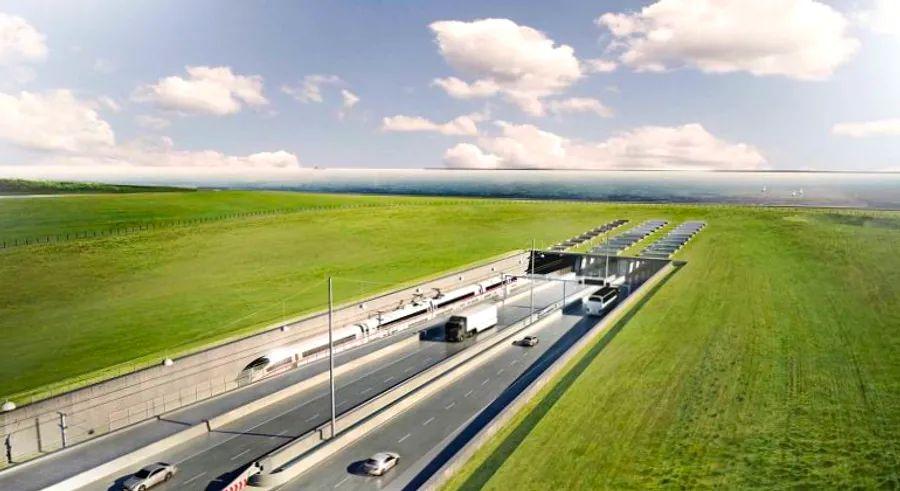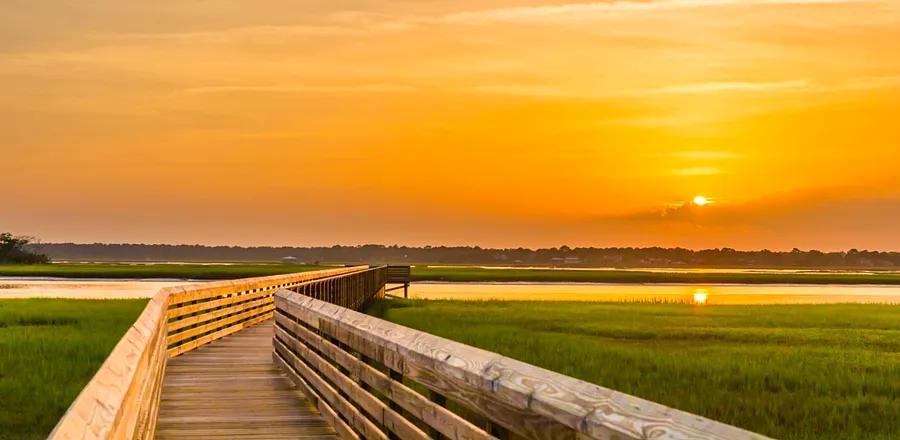Denmark and Germany Join Forces to Build the World’s Longest Immersed Tunnel

Reaching depths of up to 40 meters beneath the Baltic Sea, the world’s longest immersed tunnel will connect Denmark and Germany, dramatically reducing travel times when it opens in 2029.
After over a decade of planning, work began on the Fehmarnbelt Tunnel in 2020. Since then, a temporary harbor has been constructed on the Danish side, where the factory will soon begin producing the 89 massive concrete sections that will form the tunnel.
"We expect the first production line to be ready by the end of this year or early next year," said Henrik Vincentsen, CEO of Femern A/S, the Danish state-owned company overseeing the project. "By early 2024, we need to be prepared to submerge the first tunnel element."
The tunnel will span the Fehmarn Belt, the strait between Germany’s Fehmarn Island and Denmark’s Lolland Island. It is designed as a faster alternative to the current ferry service between Rødby and Puttgarden, which serves millions of passengers annually. The ferry ride takes 45 minutes, but the new tunnel will cut the journey to just seven minutes by train and ten minutes by car.

Quicker Travel
The Fehmarnbelt Fixed Link, the official name of the tunnel, will become the longest combined road and rail tunnel in the world. It will feature two double-lane highways, separated by a service passage, and two electrified rail tracks.
"Currently, a train journey from Copenhagen to Hamburg takes about four and a half hours," says Jens Ole Kaslund, technical director at Femern A/S, the Danish state-owned company managing the project. "Once the tunnel is finished, the same trip will be reduced to just two and a half hours."
"At the moment, many people fly between Copenhagen and Hamburg, but in the future, taking the train will be the preferred option," he says. The drive will also be an hour faster than it is now, thanks to time saved by skipping the ferry line.
In addition to benefiting passenger cars and trains, the tunnel will improve freight transport, Kaslund notes, creating a land route from Sweden to Central Europe that will be 160 kilometers shorter than the current options.
Currently, traffic between Scandinavia and Germany via Denmark must either cross the Fehmarnbelt by ferry or take a longer route over bridges linking the islands of Zealand, Funen, and the Jutland peninsula.
Project Kickoff
The tunnel project began in 2008 when Germany and Denmark signed an agreement to construct it. However, it took more than ten years for both countries to pass the necessary legislation and complete the required geotechnical and environmental impact assessments.
While the approval process went smoothly on the Danish side, in Germany, several organizations – including ferry operators, environmental groups, and local governments – contested the project, citing concerns about unfair competition, as well as environmental and noise issues.

In November 2020, Germany's federal court dismissed the complaints: "The court issued a ruling with a set of conditions that we expected and were prepared for, focusing on environmental monitoring during construction, including noise and sediment concerns. We are committed to minimizing the environmental impact as much as possible," says Vincentsen.
With the temporary harbor on the Danish side now complete, several other phases of the project are underway. This includes digging the trench that will hold the tunnel, as well as the construction of the factory that will manufacture the tunnel sections. Each section will be 217 meters long (about half the length of the world’s largest container ship), 42 meters wide, and 9 meters tall. Weighing in at 73,000 metric tons each, they will be as heavy as more than 13,000 elephants.
"We’ll have six production lines, and the factory will be made up of three halls, with the first one now 95% finished," says Vincentsen. The tunnel sections will be placed just beneath the seabed, around 40 meters underwater at its deepest point, and will be moved into position using barges and cranes. The entire process of positioning the sections is expected to take approximately three years.
A far-reaching impact
As many as 2,500 people will be directly involved in the construction of the tunnel, a project that has been affected by global supply chain disruptions.
"The supply chain is a challenge right now, as the prices for steel and other raw materials have risen. While we do get the materials we need, it's been difficult, and our contractors have had to expand their list of suppliers to ensure they can secure what’s required. It’s a critical issue we are closely monitoring, because a reliable flow of materials is key to the success of the project," says Vincentsen.
Michael Svane, representing the Confederation of Danish Industry – one of Denmark's largest business organizations – believes the tunnel will bring significant benefits to businesses, not just in Denmark, but across the wider region.

"The Fehmarnbelt tunnel will establish a vital link between Scandinavia and Central Europe. By improving the railway infrastructure, it will shift more freight from road to rail, fostering a more sustainable, climate-friendly form of transport. We see cross-border connections as a driver for economic growth and job creation, benefiting not only local communities but also the nation as a whole," he tells Dinogo.
Although some environmental groups have raised concerns about the potential effects on porpoises in the Fehmarn Belt, Michael Løvendal Kruse of the Danish Society for Nature Conservation believes the project will bring environmental advantages.
"As part of the Fehmarnbelt Tunnel development, new natural areas and stone reefs will be created on both the Danish and German sides. Nature needs room to thrive, and this project will provide more space for wildlife," he explains.
"The greatest benefit, however, will be the positive impact on the climate. A quicker crossing of the Fehmarnbelt will make trains a serious competitor to air travel, and transporting goods via electric trains is undoubtedly the most eco-friendly option," he says.
Evaluation :
5/5



